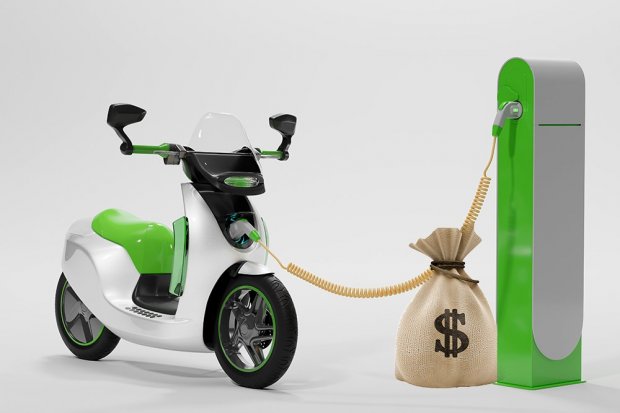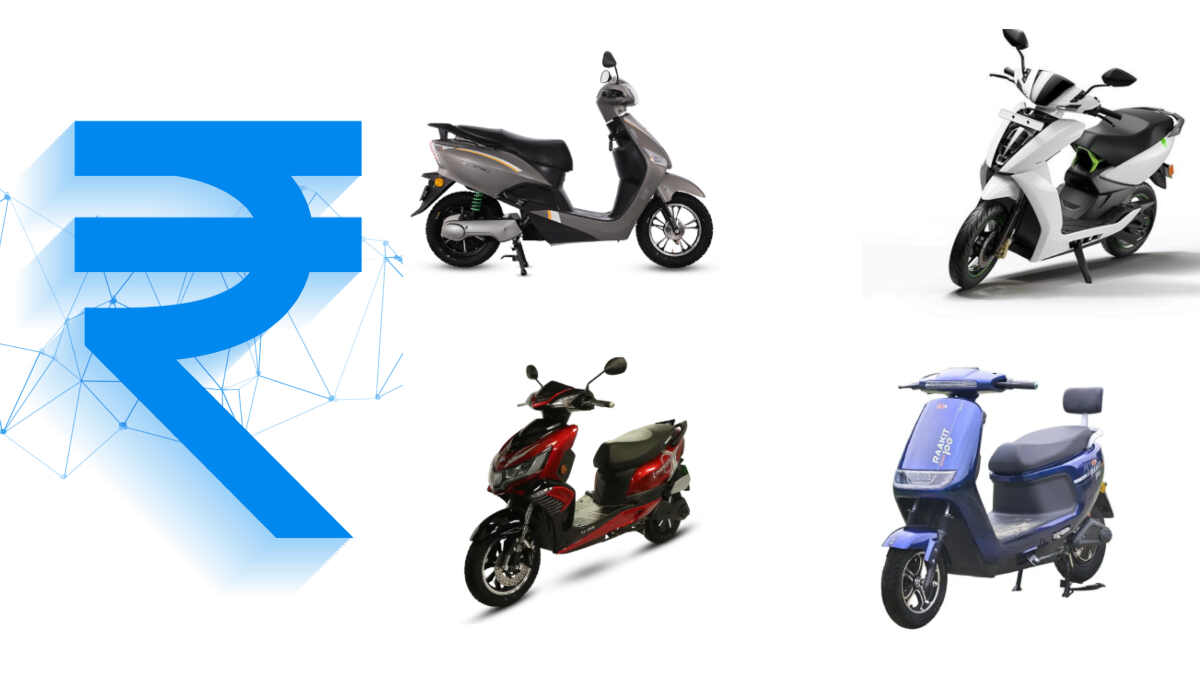Is The Plan Of Selling Millions Of Electric Bikes On 2023 Roads That Easy, Or Does It Comes With Its Own Sets Of Anticipated Hurdles?
Electric two-wheelers would now receive a 15% subsidy on the ex-factory price, down from 40% under the previous policy.

Under the flagship incentive plan, the government is contemplating boosting the sale of roughly a million electric two-wheelers in the current fiscal year. It is prepared to increase funds if necessary. The Centre already has a rolling plan to fund 564,000 electric two-wheelers as part of the second iteration of the Faster Adoption and Manufacturing of Electric Vehicles (FAME II) initiative, and it is seeking to increase this number by another half a million.
Following an upward adjustment in subsidy that swiftly drained the allocation, the government upped the subsidy allocation for electric two-wheelers by 75% to Rs 3,500 crore last quarter, up from Rs 2,000 crore in the budget. In the previous fiscal year, sales of electric two-wheelers almost tripled to 727,000 units. In FY23, the FAME II plan subsidised more than 40% of these purchases. So far, the government has supported the sale of around 690,000 electric two-wheelers under the plan.

To support more vehicles, the subsidy per unit for electric two-wheelers has been cut. Electric two-wheelers would now receive a 15% subsidy on the ex-factory price, down from 40% under the previous policy. This will result in more expensive e-bikes for end users, while manufacturers will benefit from increased manufacturing.
According to estimates, around 46,000 electric two-wheelers were sold last month, compared to a monthly average of 60,000 units sold in the previous fiscal year. According to an official, there was some impact on sales last month as dealers shifted inventory ahead of the June 1 price increase. Over the last two years, customer awareness of electric vehicles has increased dramatically. Sales will improve in the next months.
But is the plan of selling millions of electric bikes on 2023 roads that easy, or does it comes with its own sets of anticipated hurdles?
The need for this expansion plan for electric two-wheelers.
This expansion plan comes as the government has decided to take action against a half-dozen electric two-wheeler manufacturers who are accused of submitting fraudulent documents and unlawfully claiming subsidies worth Rs 469 crore while failing to fulfil localisation standards.
In October of last year, these firms were forbidden from making claims under FAME II, awaiting an investigation, yet they continued to sell automobiles at incentivised prices to end consumers. The Ministry of Heavy Industries specified 18 indicators for satisfying FAME II localisation standards. According to investigations, seven of the 26 firms incorporated under FAME II did not comply with the rules but filed documentation to receive incentives. Oh, is this the onset of another scams?
The biggest danger in electric vehicles has been battery fires so far. However, now it seems the whole Central Government subsidy system is on fire. The 2019 FAME II programme was intended to be a pioneering policy effort aimed at revolutionising the Indian mobility industry by promoting the use of E-vehicles over fuel-guzzling, old-tech internal combustion engine (ICE) variations. As its present phase approaches an end in 2023, it is slandered, even weakened by its influence.
A mix of Sarkari’s fraudulent actions and corporate shadowboxing has caused the officials at the Ministry of heavy industries to dig up concerns — centred on the degree of localisation of electric scooters — and launch a series of disciplinary procedures that have all but killed the industry. Their decision to withhold subsidies and threaten penalties on nearly a dozen “erring” companies has also exposed the flaws of overestimating India’s true manufacturing prowess while simultaneously sending a warning signal to all private players who have been relying on various ongoing subsidy schemes that one may receive funds only to be asked to return it by the same risk-averse bureaucrats who had handed over the cheques in the first place.

The Prime Minister’s aim for decarbonisation sparked the commencement of this ambitious initiative, which coincided with the need for energy independence. To put more green vehicles on the road, as well as their charging infrastructure, for a greener, cleaner environment and to bridge the 30-40% price difference between an ICE vehicle and an EV, Rs 2000 crore was set aside for E-two wheelers in 2019 from a total pool of Rs 10,000 crore set aside for the entire EV industry under Fame II.
This subsidy was only a beginning kit with a clear sunset clause. It was computed based on battery power – initially capped at Rs 10,000 per kWh, then increased to Rs 15,000 per kWh to boost sales of up to one million e-bikes over four years.
The co-adjuvant phased manufacturing plan (PMP) was a side attempt at economic self-sufficiency – a 50% localisation objective in phases with incremental item-by-item deadlines. Call it a Make in India hard push that benefited from the widening schism between Beijing and Washington, which has driven most multinationals to adopt a “China+1 strategy.”
Covid, on the other hand, threw everyone off guard. Several E-scooter players filed several representations to the relevant government requesting PMP extensions after failing to localise on time while the entire world was in turmoil. Volumes were too low at the time for car component manufacturers, who were already crippled by industry uncertainty, to entertain new E-scooter orders by making new capital expenditures. The government’s first response was positive, and extensions were granted based on which cars were approved by competent organisations, and subsidies were refunded until 2022 when they were unexpectedly discontinued due to anonymous complaints.
It took nearly a year for the enterprises to be alerted that their subsidies were being withheld, by which time they had passed on about Rs 1200 crore in subsidies to customers. Then, in 2023, they received recovery notifications requesting the funds be returned retroactively. It is strange that during the pandemic, one arm of the same government initiated an emergency funding scheme (ECLGS) to save jobs and local industry dealing with the unprecedented crisis, while another sought a crackdown on some of the earliest movers who had fueled the EV revolution in the first place.

If the initial intent of FAME was to convert the greatest number of dirty-fuel scooter riders to EVs by focusing on the lowest end of the consumer profile, the policy was gradually reduced to enable better-rated batteries for greater power, increasing the vehicle’s price. Despite the policy’s price ceiling of Rs 1.5 lakh (ex-factory), the higher-powered “premium” automobiles took the lion’s share of the budget.
The average subsidy per car also doubled from the originally anticipated Rs 20k/vehicle to over Rs 40K per vehicle, thus drying up the fund. The Ministry, too, fell short by half a point. It appears that the financial allowance was established first, then the maths followed. On that’s our talented team in the budget, sarcastically!
Ironically, if the proposed subsidy clawback of Rs 500 crore is added to the Rs 1400 crore withheld by the government to date, it would equate to almost no allocation to the industry in the last four years of the scheme while the private sector passes on the subsidy to customers out of their own pockets! In fact, the government would have accomplished the inconceivable accomplishment of completely repealing a government plan.
Such irrational reactions also reinforce the industry myth that all car manufacturers, including a, are original equipment manufacturers (OEMs). Many companies, after designing or creating the prototype in-house, outsource major portions of the crucial components to a network of multi-tiered independent suppliers that obtain economies of scale by aggregating demand.
EVs, in particular, contain sophisticated engineering elements that are best left to expert suppliers. While manufacturers such as Ola, Tata, and others are working on vertical integration, the reliance on the vendor model remains strong and ubiquitous. Why, therefore, if suppliers fail to deliver, should the firm go bankrupt?
While some top-tier manufacturers have pushed the envelope by using sales strategies and structures to obfuscate, the little knit-picking and overregulation are working against the core idea of E-Mobility itself, incentivising both the private sector and the government to try and game the system by outsmarting each other, thereby blowing a once-in-a-lifetime manufacturing opportunity.
Make achievable objectives, alleviate the finance bottleneck that has already seen incumbents and early movers fall by the wayside, and also a 20% reduction in industry-wide sales in June – the first year-on-year loss since January 2022.

The final concept of subsidies.
Subsidies cannot be perpetual, but for the time being, they should be targeted to those who need them the most and made equal for everybody by levelling off distortions. Premium EV two-wheelers should not consume half the budget for just a quarter of the intended output. Allow the budget to linger longer, affecting a larger pool. Otherwise, only corporate attorneys will have fancier cars and finer homes. And if that ends, the scenes of fraudulent subsidies are making their entry into the picture. And at last, all these are pointing away from the concept of electric vehicles and paving their way towards corporate failure in the biggest democracy of the world!




